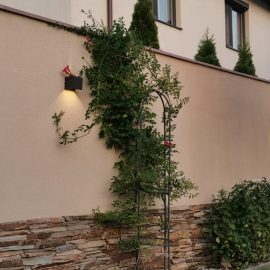Campsis, planting guide and care work
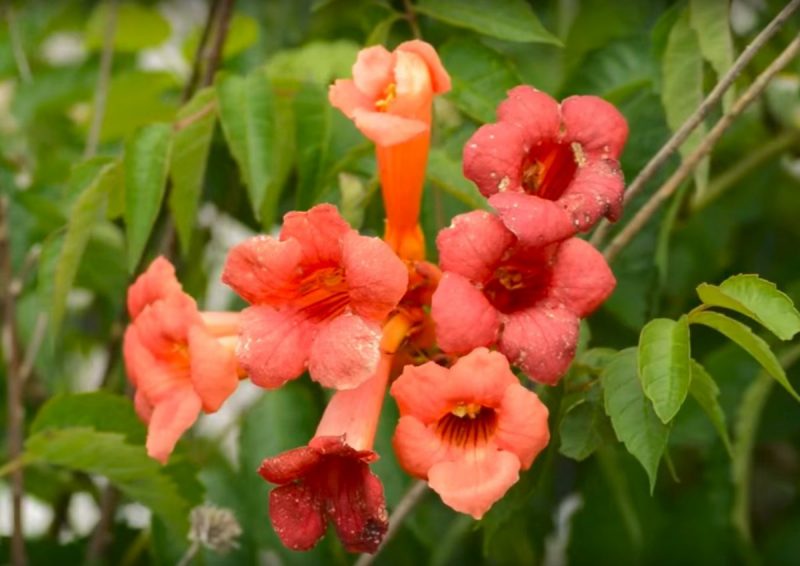
Campsis radicans, popularly called trumpet vine, yellow trumpet vine, trumpet creeper, hummingbird vine, etc., is a vine native to North America. It has adventitious roots with which it props itself and it has fast growth and can reach up to 12 m in height. The leaves are imparipinnate-compound. It is decorative, especially thanks to its large flowers, colored in intense orange, in the shape of a trumpet, clustered in terminal bouquets. Flowering takes place in July-September.
Species and varieties. Depending on the variety, Campsis flowers can have different colors: red flowers – Atropurpurea, Flamenco or Crimson trumpet, yellow flowers – Flava, orange flowers – Minor, Madame Galen.
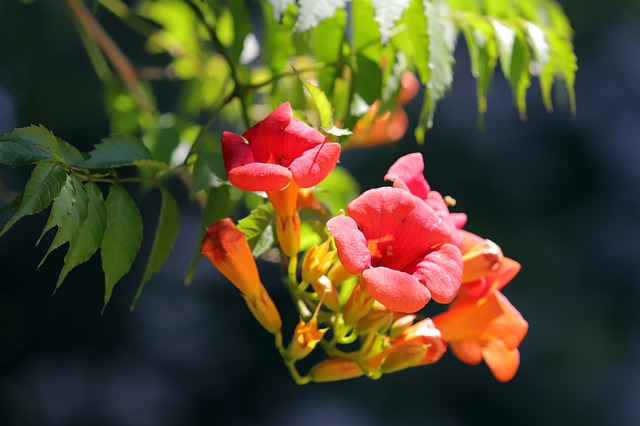
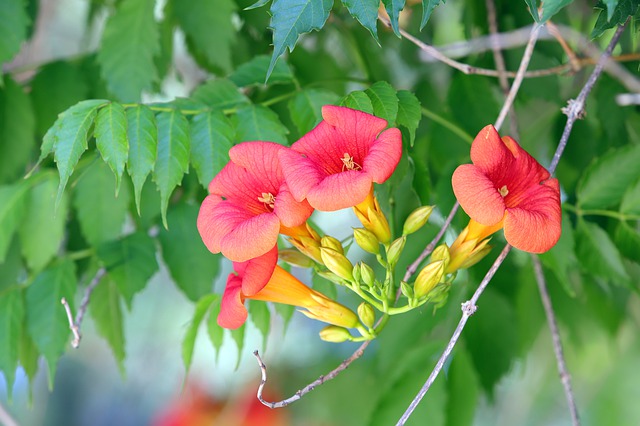
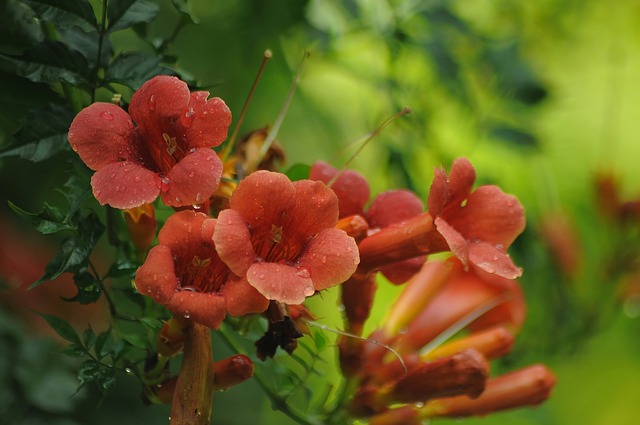
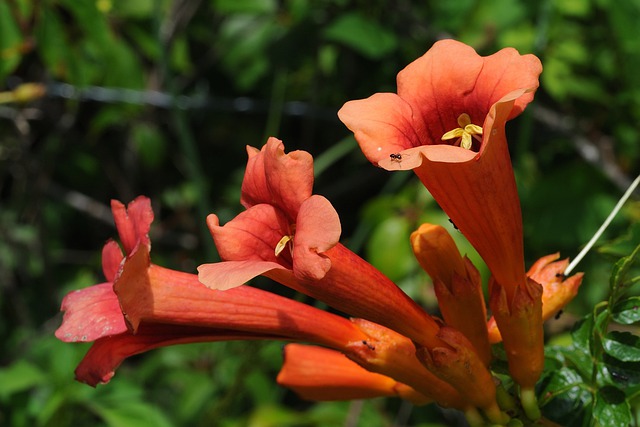
Environmental conditions
Light. It is a light-loving plant and it vegetates and blooms abundantly if it is positioned in direct sunlight.
Temperature. Campsis is a thermophilic plant. It does not withstand frost well, and frostbite may appear after exposure, but it recovers very quickly from its shoots.
Humidity. It needs moderate humidity, but it withstands drought well for short periods of time.
Soil. It prefers fertile soil, but it adapts to all soil types.
Watering
It is important that after planting it, Campsis be watered relatively often, to help it accommodate the new place. Then, watering should be done according to the needs of the plant and the type of soil. It is recommended, however, to water it with larger amounts and less often, rather than more often and with a small amount of water.
Pruning
Campsis withstands pruning very well. Being a vine, it needs a prop from the beginning to be able to grow properly.
Fertilization
It should be done in spring with specific fertilizers, with slow release.
Recommended products
-
You can find products on a different store
Change Store -
You can find products on a different store
Change Store -
You can find products on a different store
Change Store -
You can find products on a different store
Change Store -
You can find products on a different store
Change Store -
You can find products on a different store
Change Store -
You can find products on a different store
Change Store -
You can find products on a different store
Change Store -
You can find products on a different store
Change Store -
You can find products on a different store
Change Store -
You can find products on a different store
Change Store -
You can find products on a different store
Change Store -
You can find products on a different store
Change Store -
You can find products on a different store
Change Store -
You can find products on a different store
Change Store -
You can find products on a different store
Change Store -
You can find products on a different store
Change Store -
You can find products on a different store
Change Store -
You can find products on a different store
Change Store -
You can find products on a different store
Change Store -
You can find products on a different store
Change Store -
You can find products on a different store
Change Store -
You can find products on a different store
Change Store -
You can find products on a different store
Change Store
Propagation
It is propagated through cuttings, in July-August, which have to be rooted in a greenhouse. It can also be propagated through layering or dividing of the bush.
Recommended products
-
You can find products on a different store
Change Store -
You can find products on a different store
Change Store -
You can find products on a different store
Change Store -
You can find products on a different store
Change Store -
You can find products on a different store
Change Store -
You can find products on a different store
Change Store -
You can find products on a different store
Change Store -
You can find products on a different store
Change Store -
You can find products on a different store
Change Store -
You can find products on a different store
Change Store -
You can find products on a different store
Change Store -
You can find products on a different store
Change Store -
You can find products on a different store
Change Store -
You can find products on a different store
Change Store -
You can find products on a different store
Change Store -
You can find products on a different store
Change Store -
You can find products on a different store
Change Store -
You can find products on a different store
Change Store -
You can find products on a different store
Change Store -
You can find products on a different store
Change Store -
You can find products on a different store
Change Store -
You can find products on a different store
Change Store -
You can find products on a different store
Change Store -
You can find products on a different store
Change Store
Diseases and pests
It is a plant resistant to diseases and pests.
In addition:
- Campsis radicans is an invasive plant, its adventitious roots fixed on the walls, and in time it can even destroy them.














































































































































































































































































































































































































































